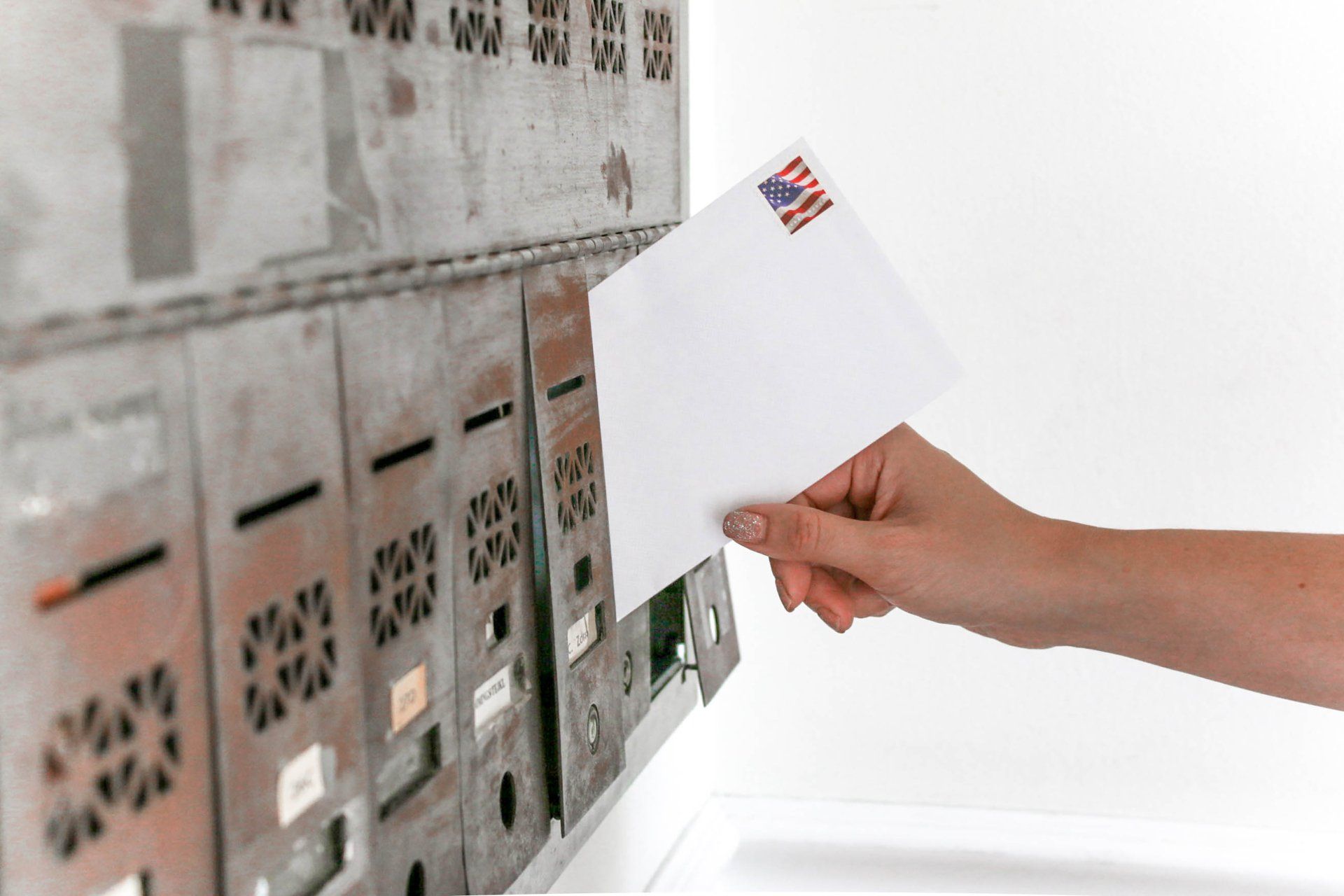Seller's Guide: A Concise Moving Checklist for a Seamless Home Sale
Selling your house can send you through a range of emotions. From the excitement of moving onto new opportunities to the stress of packing up a lifetime's worth of memories, it's a journey filled with highs and lows. But amidst the chaos of organizing open houses, negotiations, and paperwork, the moving process often gets overlooked.
Picture this: You've finally accepted an offer on your home. There's a sense of relief knowing that the end of the selling process is in sight. But then it hits you—now you have to actually pack up everything and move out. Suddenly, what seemed like a distant concern becomes an urgent reality. Where do you even begin?
For many, this moment marks the beginning of a whirlwind of stress and confusion. They find themselves overwhelmed by the sheer magnitude of the task ahead. From deciding what to keep, what to donate, and what to toss to coordinating movers, redirecting mail, and transferring utilities—the list of things to do can seem never-ending.
And let's not forget the emotional toll that moving can take. Saying goodbye to a home where you've made countless memories, raised a family, or built a life can be incredibly difficult. It's not just about leaving behind a physical space; it's about saying farewell to a chapter of your life and stepping into the unknown.
The pressure to sell quickly and for a reasonable price adds to the complexity. Every day your home sits on the market is another day of uncertainty and financial strain. You want the process to be seamless and stress-free, but you're unsure where to start.

This is where a comprehensive moving checklist can be a game-changer. Breaking down the moving process into manageable steps and providing a clear roadmap for what needs to be done and a well-thought-out checklist can help alleviate much of the stress and confusion associated with selling your home.
However, not all moving checklists are created equal. Generic templates found online may overlook important details or fail to address the unique challenges of selling a home. That's why it's essential to have a checklist specifically tailored to the needs of your home—one that takes into account the intricacies of the selling process and provides practical guidance every step of the way.
In this Seller's Guide, we'll provide you with just that: a concise moving checklist designed to streamline your home sale and guarantee a seamless transition to your new abode. We'll cover everything you need to know to make your move as stress-free as possible.
Whether you're a first-time seller or a seasoned pro, this guide will serve as your trusted companion throughout the selling process. So, sit back, relax, and let us take the guesswork out of your move.
We buy houses Tulsa
and with our comprehensive checklist by your side, you'll be well on your way to a seamless home sale in no time.
Conduct a Pre-Inspection
Performing a pre-inspection before finalizing the sale is essential, even if repairs are not required for cash home buyers. This inspection allows you to assess the property's overall condition and ensure that it meets expectations and obligations as stated in the purchase agreement. By identifying potential issues beforehand, you can avoid surprises during the closing process and maintain transparency with the buyer.
The pre-inspection is a proactive measure to address any concerns affecting the sale. It provides a chance to document the current state of the property and discuss any findings with the buyer or their representative. Although repairs may not be mandated, understanding the property's condition helps you prepare for negotiations and ensures a smooth ownership transition.
To
sell my house fast Tulsa, enlist the services of a qualified home inspector or knowledgeable housing sales professional. Walk through the property systematically, checking key areas such as the roof, foundation, plumbing, and electrical systems. Take notes or photographs of any notable observations and review them with the buyer to establish mutual understanding and clarity before closing. This proactive approach fosters trust and cooperation between both parties.
Handling Utilities and Services
Handling utilities and services involves more than just disconnecting them from your current home. Ensuring utilities are transferred or canceled appropriately is crucial to avoid unnecessary charges and service interruptions. This step is vital in maintaining financial responsibility and ensuring a seamless transition to your new residence without complications.
Properly managing utilities and services is essential for a smooth moving process. It prevents post-move issues, such as service disruptions, which can add stress during an already busy time. You should contact their utility providers well in advance to schedule disconnections or transfers according to their moving timeline.
Before you
sell my house fast broken arrow OK, you should create a checklist of all utility providers and contact information. You should notify each provider of their moving date and arrange for final readings or transfers as necessary. Keeping records of these communications ensures everything is in order before leaving the current residence and starting fresh at the new location.
Securing Important Documents

Securing important documents related to the home sale to Tulsa home buyers is crucial for a smooth closing process. These documents include the purchase agreement, title deeds, mortgage papers, and warranties or maintenance records. Keeping these documents organized and accessible ensures that all necessary paperwork is readily available during the closing process.
Securing important documents is not just about paperwork; it's about protecting your investment and ensuring legal compliance throughout the sale process. You should store these documents in a safe and easily accessible place, like a secure digital storage system. This preparation minimizes the risk of misplaced or lost documents and facilitates a smooth transition to the new homeowner.
To effectively secure important documents, you can create digital copies as backups and store them securely on an external drive that requires a password or in cloud storage. Physical copies should be kept in a safe place, such as a fireproof safe or with a trusted advisor. Organizing documents by category for easy reference during and after the move is also beneficial.
Notifying Relevant Parties
Notifying the proper parties about your change of address is crucial to ensuring that you continue to receive important correspondence after you move. This includes banks, credit card companies, subscriptions, and other institutions you regularly interact with. By updating your address promptly, you avoid missing important notifications that could impact your financial or personal affairs.
Prompt notification of address changes is essential for maintaining seamless communication and preventing disruptions in services or deliveries. It ensures you receive mail and communications at your new residence without delay, reducing the need for forwarding services or missed communications during the transition period.
Compile a list of all institutions and services that require your updated address. Let them know well in advance of your moving date to ensure that records are updated before you leave your current home. For quick updates, use customer service hotlines or online account management tools. You should also think about setting up mail forwarding with your local post office to retrieve any missed correspondence during the transition.
Packing and Labeling
Packing and labeling your belongings systematically before the move helps streamline the unpacking process and ensures that items are easily accessible when needed. First, group things into categories according to the type of item and the room in your new house where it will be used. Label boxes clearly with contents and room names to facilitate organized unpacking and reduce confusion during the move-in phase.
Effective packing and labeling save time, minimize the risk of damage to fragile items, and simplify the process of settling into your new home. Properly labeled boxes allow movers or yourself to place each box in its designated room upon arrival, making unpacking more efficient.
Use sturdy boxes or containers suitable for the items being packed. For protection during transit, wrap fragile items in packing paper or bubble wrap. Label each box on multiple sides with a brief description of its contents and the room where it belongs. Keep an inventory list of packed items for reference and prioritize packing essential items you'll need immediately upon arrival at your new home.
Final Walkthrough
Conducting a final walkthrough of your property before completing the sale ensures everything is in order according to the purchase agreement terms. Even though repairs or staging may not be required for a cash home sale, this step allows you to verify that all agreed-upon fixtures, appliances, and conditions are met as per the contract.
The final walkthrough serves as a last opportunity to identify any issues that need to be addressed before closing. It provides peace of mind that the property is being transferred in the agreed-upon condition, minimizing potential disputes or complications during the closing process.
Refer to the purchase agreement and checklist for any specific items or conditions outlined in the contract. Walk through each room and exterior space, checking for any damage or unexpected changes since the initial inspection. Document any findings with notes or photographs to discuss with the buyer or housing sales agent if necessary, ensuring clarity and transparency.
Coordinate the Closing Process
Coordinating the closing process involves finalizing the sale of your home with the buyer and ensuring all legal and financial obligations are met. This phase includes coordinating with various parties, such as the buyer's agent, your housing sales attorney, and the title company, to ensure a smooth and timely transfer of ownership. It's essential to review and understand the closing documents to ensure accuracy and adherence to the terms of the sale agreement.
Effective coordination of the closing process is crucial for completing the home sale transaction without delays or complications. It allows you to address any outstanding issues or concerns before closing. Clear communication and proactive management of deadlines and requirements help maintain transparency and trust between all parties involved in the transaction.
You should maintain open lines of communication with your attorney, and the buyer's representatives. Review all closing documents carefully and seek clarification on unclear terms or conditions. Plan the closing date in conjunction with the title company, and ensure the required funds and documentation are ready and available on time. Attend the closing meeting prepared with identification and any required documentation to facilitate a smooth and efficient transfer of ownership. Finally, confirm the transfer of keys and access to the property with the buyer.
Forward Your Mail

Forwarding your mail involves notifying the postal service of your change of address to ensure that all mail is redirected to your new residence. This process is essential to avoid missing important correspondence, bills, and subscriptions during the transition period. By updating your address promptly with the postal service, you ensure that your mail continues to reach you without interruption.
Managing mail forwarding effectively is crucial for maintaining communication continuity and ensuring that you receive important documents and notices at your new address. It helps you stay informed about financial matters, legal obligations, and personal communications during and after the move. Promptly updating your address with the postal service also reduces the need for follow-up trips to your old address to collect forwarded mail.
Visit your postal service's official website or local post office to complete a change-of-address form. Provide accurate information about your old and new addresses, including apartment numbers or unit identifiers, if applicable. Select the start date for mail forwarding and verify the details to ensure accuracy. Additionally, inform important contacts, like banks and subscription services, of your address change to update their records accordingly. Regularly check your new mailbox and notify senders of any missed forwarded mail to update their records promptly.
Plan for Moving Day
Planning for moving day involves coordinating logistics such as hiring movers, scheduling transportation, and organizing packing and unpacking timelines. It is important to ask yourself the following question:
What is the cheapest way to move things cross-country? Renting a moving truck or shipping container is the cheapest way to move long-distance. Moving a few items in a container can cost as low as $700, whereas renting a standard-sized moving truck will range from $1,200 to $2,100. (1)
Effective planning for moving day reduces stress and minimizes potential disruptions during the transition to your new home. It allows you to anticipate and address any challenges or last-minute changes, ensuring that the moving process stays on track and meets your timeline and budgetary requirements.
Create a detailed schedule outlining tasks such as packing, loading, transportation, and unpacking. Confirm arrangements with movers or rental vehicle providers in advance and communicate any special instructions or requirements. Pack essential items separately and ensure access to necessary documents, keys, and personal belongings throughout the moving process. Finally, specific responsibilities should be designated for individuals involved in the move to streamline operations and maintain organization on the moving day.
Update Subscriptions
Updating subscriptions involves notifying service providers and companies with whom you have subscriptions or memberships about your change of address. This ensures you continue receiving magazines, newspapers, monthly boxes, or other subscription services at your new residence without interruption. It's essential to update your address promptly to avoid missing deliveries and maintain continuity in receiving your subscribed items.
Effectively managing subscription updates helps you stay connected to the services and products you enjoy without disruption during your move. It ensures that you receive timely updates, issues, or products according to your subscription terms, preventing delays or missed deliveries that could impact your enjoyment or use of these services.
Start by compiling a list of all subscriptions and memberships you currently hold. Visit the websites or contact customer service for each service provider to update your address information. Provide your new address details accurately and confirm the effective date for the change. Some services may require a lead time for address updates, so initiate the process well before your move. Monitor your subscriptions after the move to confirm that deliveries are routed correctly to your new address.
Unpack Methodically
Unpacking methodically involves systematically unpacking and organizing your belongings after moving into your new home. This process is crucial for setting up your new living space efficiently and reducing the stress of living out of boxes. By unpacking in an organized manner, you can prioritize essential items, establish functional living spaces, and ensure that everything is unpacked and put away properly.
Methodical unpacking is essential for settling into your new home smoothly and creating a comfortable living environment. It allows you to unpack room by room, focusing on one area at a time to avoid feeling overwhelmed. Prioritize unpacking essential items first, such as kitchen essentials, bedding, and toiletries, to ensure immediate comfort and functionality in your new space.
Start by unpacking essential items for daily living, such as kitchenware, bedding, and bathroom supplies. Unpack one room at a time, starting with high-traffic areas like the kitchen and bedrooms, before moving on to less essential spaces. Organize belongings as you unpack to maximize storage space and maintain order in each room. Take breaks as needed to avoid exhaustion and focus on establishing a functional and comfortable living environment in your new home. By unpacking methodically, you can gradually settle into your new space and create a sense of familiarity and comfort after your move.
This is paragraph text. Click it or hit the Manage Text button to change the font, color, size, format, and more. To set up site-wide paragrapTulsa Home Buyers • June 14, 2024h and title styles, go to Site Theme.
Ready to work with Tulsa Home Buyers?
Let's connect! We’re here to help.
Send us a message and we’ll be in touch.
Or give us a call today at 111-222-3333


